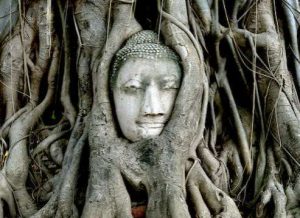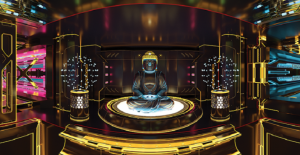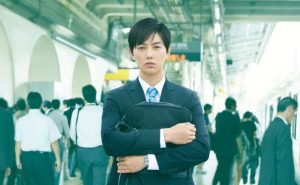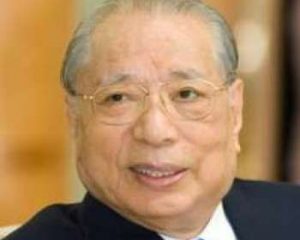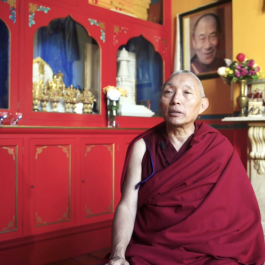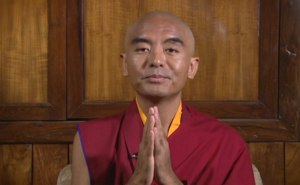The following is a translation of an article that was originally published by Buddhistdoor en Español.
The global COVID-19 pandemic has generated such a magnitude of disruption that it has created an opportunity to take advantage of the reconstruction process ahead of us, and thus to think about building better futures. It calls us to look to the future creatively, without fear, and to think of the crisis situation in which we live as a time for humanity as a whole to create better, fairer, more egalitarian, harmonious, free, democratic, and happier societies.
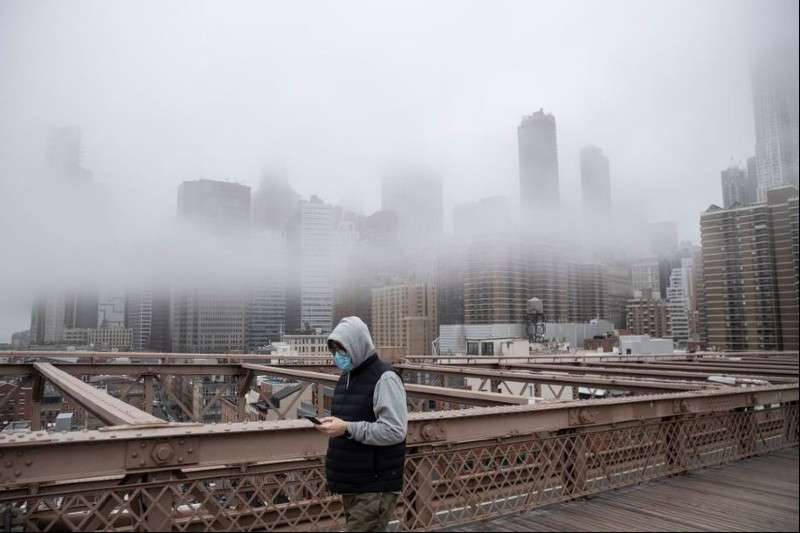
The global scale and dramatic consequences of the pandemic invite us to collectively reflect on the probable, possible, and preferable social futures, and thus begin the path of building better and more desirable societies. It also offers us an opportunity to reflect on the contribution of Buddhists to those futures. Our future is not set in stone.
To achieve this, from my perspective as a sociologist and a Buddhist, I review our understanding of our possible futures, look at the pandemic from the perspective of those futures, and analyze the contribution of Buddhist values and practices in building better futures. Buddhist ideals such as non-self, dependent origination, emptiness, non-duality, the law of karma, the bodhisattva path, loving-kindness, and the four immeasurables all imply interrelatedness with other beings. In that interrelatedness, one wishes for their well-being and happiness. These ideas constitute a major body of values and practices that can be employed toward the creation of harmonious relationships with other individuals and within and between societies.
What is the future? And why should we think about it?
I begin by recognizing something paradoxical for students of the future: the future does not exist. In fact, when it becomes so, it is no longer the future; it is the present. Hence, thinking about the future is nothing more than a way of focusing on the present, and we focus on the present to build our future.
But although the future does not exist, there are elements that will constitute it, ingredients and seeds of the future, already in the here and now. And the future, like everything in the life of this planet, is the result of complex causal forces in constant interaction. Obviously, our actions are also part of such a system. Hence, individual and collective action are creators of possible futures.
The future is open, it is not unique or predetermined, and therefore there may be alternative possible futures. The idea that the future does not exist leads us to the idea that the future is changeable. If it doesn’t exist, it has yet to be created. And if it has to be created, then we can help shape it.
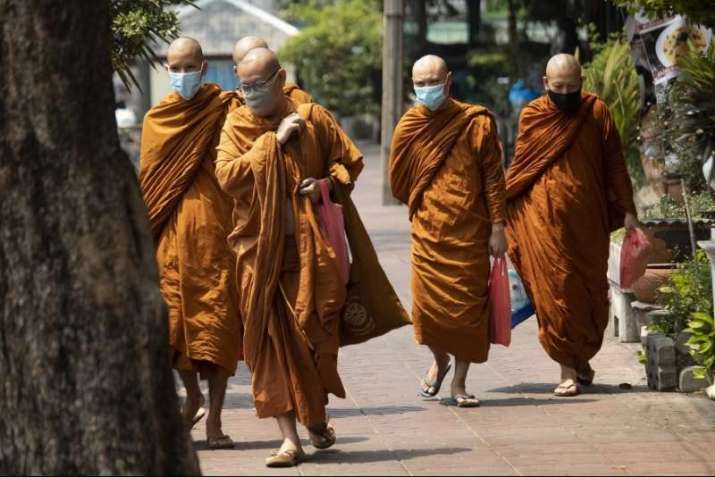
Three types of future and COVID-19
Wendell “Wendy” Bell (1924–2019), a sociologist and founder of futures studies, introduced a classical approach that defines futures in the plural and indicates three main types: probable, possible, and preferable.* Probable futures are those that we think can occur with high probability based on current causal forces and trends. They are largely a continuation of the present. Possible futures are all those thinkable and imaginable futures that we believe could happen in a somewhat more distant future. And the preferable futures are those that we like and think should happen or that we would like to foster.
The study of probable futures focuses on several questions: what would be the most likely future of a specific phenomenon in a specific period of time and under specific conditions? What will the future be like if things continue as they are today? As present conditions change, this type of future must be constantly rethought. Furthermore, changes in the ingredients of causation systems and in human actions change those highly probable futures.
During these months of pandemic, predictions about the future after the effects of the coronavirus have multiplied. Obviously, many predictions are made with the best of intentions, aiming to help us move into the future that they say awaits us. Many of the predictions are possibly attempts to define the future, to shut it down, or to make it inevitable. They seem to want to convince us that this is the future and it will be, and therefore we must accept it and adapt to it. “Nothing will be the same” and “the new normal” have become the mantras of this pandemic. They have become the dominant discourses. (Rodríguez 2020)
In addition to the numbers, curves, and lines of those infected and killed by COVID-19, the media have also provide us with news, analyses, and forecasts about the near probable future in economic and political terms—declining GDP, the closures of companies and sectors, massive job losses, slow recovery, tensions between countries, tensions between parties, territorial closures, increases in vulnerable populations, and so on.
All of this could create an image of an unavoidable dystopian future, generating fear and paralyzing the social capacity to act. But it is precisely the knowledge of these predictions that allows them to be changed. Each of these predictions can generate forces to enhance, or stop, or transform them.
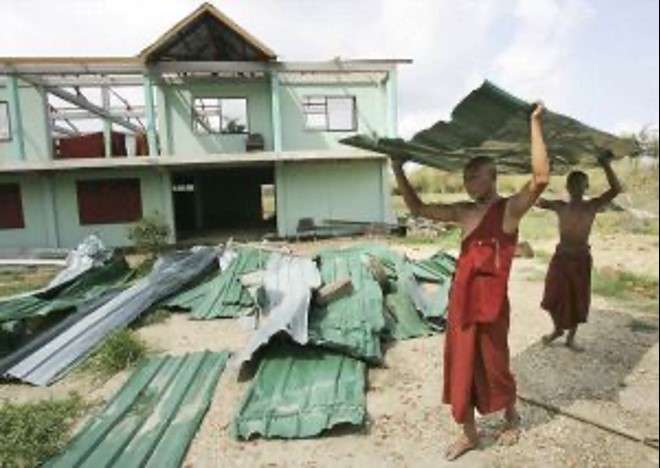
Possible futures
All of these probable futures force us to venture into the definition of alternative possible futures. This is where human creativity has led us to imagine and think about future realities. The avenue of possible futures implies thinking of present and future problems as opportunities and obstacles and limitations, and as something that can be overcome. This means looking at the present in an innovative way and realizing that the current possibilities of the future are achievable.
One of the most used instruments to think about possible futures are scenarios. Scenarios are narrative descriptions, stories with internal consistency, about possible themes or developments. Alternative scenarios are built in order to conceptualize alternative futures and clarify the possible consequences of current decisions.
The most widely used models are double-entry scenarios in which the crossing of two trends or uncertainties produces four scenarios with four typical combinations: positive change, negative change, no change, and unknown change. As an example of the first type, we can think of alternative scenarios combining two uncertain trends. For example, pandemic control on the one hand and global cooperation on the other. This would offer us four alternative scenarios: planetary consciousness, cooperation, weakness, and failure. Two of these are positive and two are rather negative.
In the planetary consciousness scenario, the infection has been controlled and a vaccine has been obtained. Planetary governance systems have been created to deal with global issues. The association of COVID-19 with the deterioration and destruction of the environment leads to actions to control environmental deterioration and to allow a certain return of nature
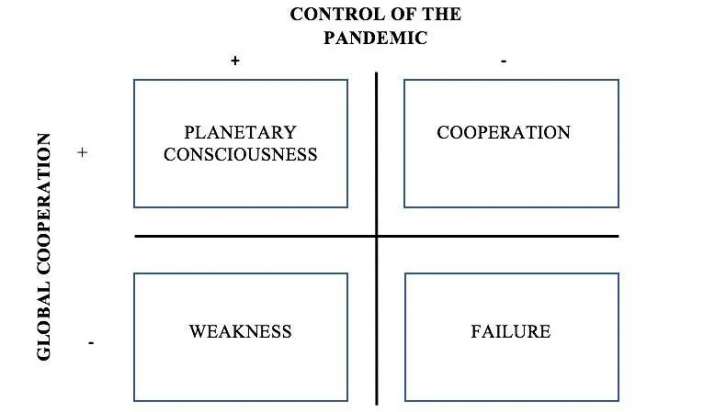
In the cooperation scenario, it has not been possible to fully control infections, but growing global cooperation allows a better understanding of the transmission processes and thus increases the capacity to stop the spread. International scientific cooperation is making great strides on a COVID-19 vaccine.
The weakness scenario is dominated by uneven development and tensions between countries and regions. The control of COVID-19 has had a high economic cost in addition to the high cost in human lives and human resources. The result is weakness in the face of any future global pandemic.
In the failure scenario, economic problems abound and uncontrolled infections lead to a critical situation of high unemployment, poverty, illness, and death.
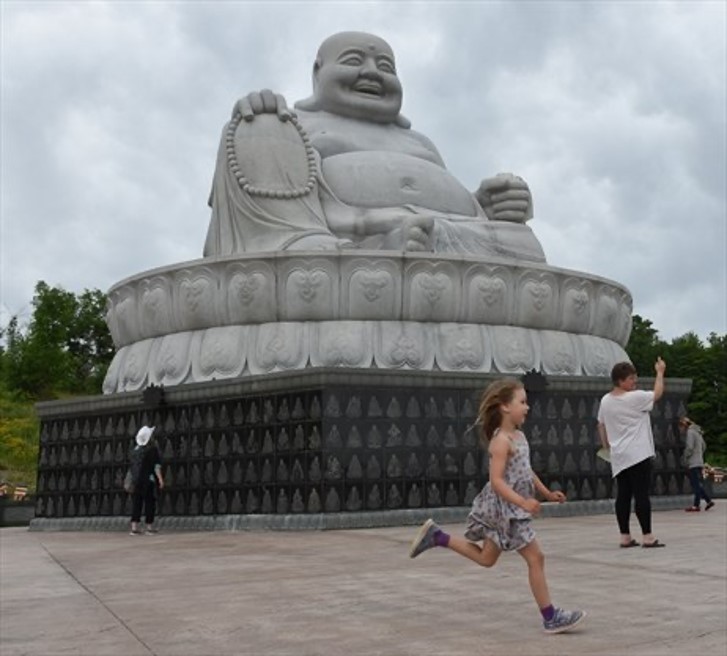
Preferable futures
The scenarios that we could build would allow us to visualize the best and most desirable futures and also give us clues on how to walk toward them and how to avoid undesirable futures. Preferable futures involve evaluating the desirability of alternative futures and prioritizing ethical foundations. Thinking about preferable futures leads us to worry about the nature of a good life and society.
The values and actions of Buddhists collected in the World Values Survey (WVS) point to their preferable futures. A general analysis of the value system shows clear positions of Buddhists toward harmonious relationships. Like most non-Buddhists, they oppose war and do not justify violence against others at all. In fact, they value altruism and tolerance as good qualities to teach children and also stand out for believing that the majority of people can be trusted and that it is important to move toward a more humane society in which wealth can be better shared.
According to this survey, the majority of Buddhists consider the people around them—family and friends—to be very important in their lives. But the proximity to others is not limited to people, but extends to all sentient beings represented by concern for the environment. A quarter of Buddhists—twice the non-Buddhist population—believe that environmental degradation is the most serious problem today. And they also favor protecting the environment over economic development a little more than non-Buddhist people. In general, Buddhist values provide an image of proximity and care for those around them as well an orientation and desire for harmony with people and the environment. (Rodríguez, 2019)
Building futures
And once we have seen facts and trends pushing toward probable futures, along with images and values that shape possible and preferable futures, we are faced with the challenge of building futures through individual and collective action.
The WVS survey shows that Buddhists also stand out as having a high level of social activity, above the averages of global and non-Buddhist populations. This is exemplified with actions toward the well-being and happiness of others and taking care of the environment. This higher level of social action coincides with higher levels of membership in civil and environmental organizations. Participation in social organizations increases trust and ties, facilitating broader and more harmonious relationships. This high level of care for others and the environment places Buddhists in the first positions of social activity towards a more harmonious and sustainable future society.
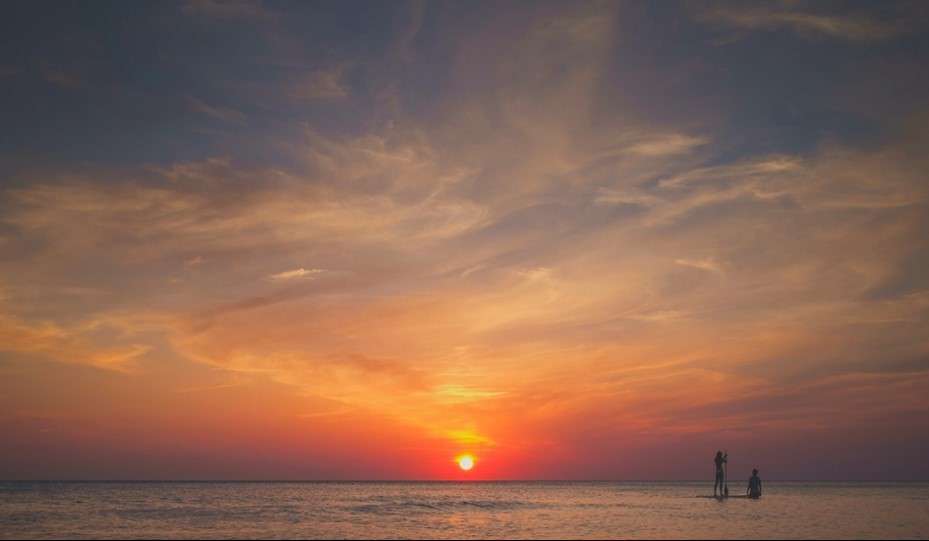
The values and actions of Buddhist populations paint an alternative image of possible and preferable futures that keeps open the possibility of futures different from some of the catastrophic images created in recent months that often lead to inaction.
We have looked at probable futures and the seeds of possible and preferable futures. How they are configured in the coming months and years will also depend on us. The main challenge is to realize that we are creating a future in the present with our ideas, thoughts, and actions. And after that, we must take additional steps to consciously create desired futures—our future, those of our loved ones, and the futures of all beings on the planet.
For the benefit of all beings!
José Antonio Rodríguez Díaz is professor of sociology at the University of Barcelona, Spain.
References
Bell, Wendell. 1996. Foundations of Future Studies. New Jersey: Transaction Books.
Rodríguez Díaz, José Antonio. 2019. Buddhists Contributions to Building More Harmonious and Sustainable Societies. A Sociological Analysis en Most Ven. Thich Nhat Tu y Most Ven. Thich Duc Thien (eds.), Buddhist Approach to Global Leadership and Shared Responsibilities for Sustainable Societies. HCM City, Vietnam: Vietnam Buddhist University Series, Religion Publisher.
See more



